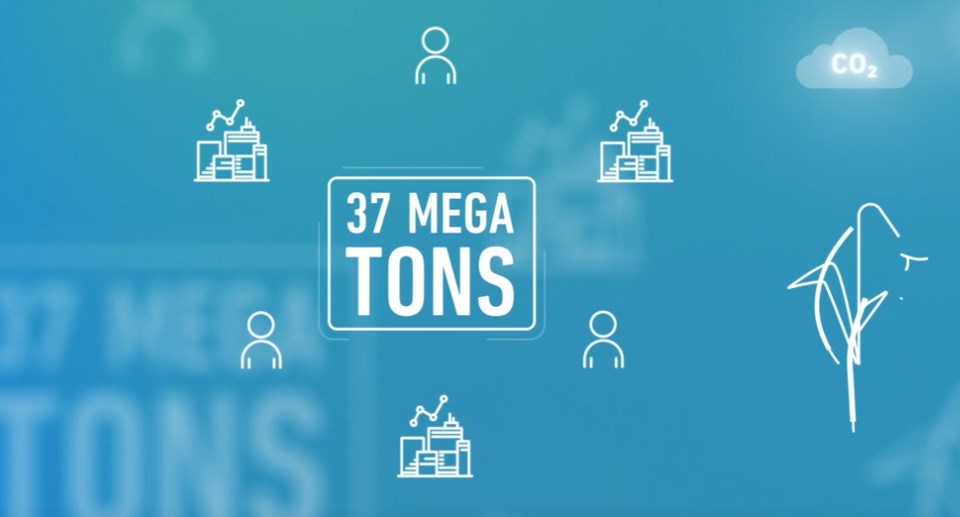Highlights:
A new carbon emission avoidance study conducted by leading sustainability institute DFGE shows the positive impact of using TeamViewer’s remote connectivity solutions in combatting climate change.
37 megatons of CO2 equivalents (CO2e) represent a fully-booked A380 flying 7,000 times non-stop from Singapore to New York or the emissions of 11 million average cars in one year.
TeamViewer solutions are playing a critical role in helping organizations globally to avoid CO2e emissions and thus contribute towards meeting the sustainability goals to limit global warming preferably to 1.5 degrees Celsius outlined in the Paris Climate Agreement.

New Delhi, February 2, 2021 – A new study conducted by the renowned sustainability experts of the DFGE research institute shows that TeamViewer, a global leader in secure remote connectivity solutions, is enabling companies to limit their carbon footprint and thus contributes to avoiding approx. 37 megatons of CO2 equivalent (CO2e) emissions per year. Through the use of TeamViewer technology to remotely maintain or repair machines, monitor networks, and access computers and other devices, distances across the globe can be bridged easily, and traveling from one place to another becomes unnecessary in many cases. Based on data from 2019 and calculations from 2020, a single connection via TeamViewer can avoid 13 kilograms of CO2e emissions on average – the equivalent to 5.5 liters of gasoline.
The new data also shows that an average TeamViewer subscriber avoids approx. 4 tons of CO2e per year which is as much as a 100,000 km train ride – or 2.5 times around the world. The use of TeamViewer’s innovative solutions is reducing the travel distance of TeamViewer users and subscribers worldwide by millions of kilometers each year as more and more tasks can be performed from afar.
Stefan Gaiser, CFO of TeamViewer, says: “We are incredibly proud of the impact our products are having in helping our subscribers and millions of non-commercial users around the world reduce their CO2e emissions each year. At TeamViewer, we are fully convinced that digitalization is a key lever to fight climate change and ultimately create a greener and more sustainable future for all of us. Therefore, we are committed to constantly developing a new range of tailored and innovative solutions that connect people and all kinds of devices around the world and make travel activities more redundant.”
Dr. Thomas Dreier, VP Innovation & Solutions and Co-Founder DFGE, says: “Carbon footprint accounting builds the basis for sustainability. Especially product carbon footprints are very complex projects as production, usage, maintenance, and disposal need to be considered. We were very excited to accompany TeamViewer’s efforts with investigating user habits in-depth and their effects on CO2 emissions.”
A central part of the detailed study was a voluntary, anonymous online survey, conducted between October and November 2020 among users of TeamViewer. The 1,007 participants were almost evenly distributed across EMEA, APAC, and AMERICAS, around 60% were paying customers, the other participants were private non-commercial users.
One challenge of the study was that TeamViewer’s solutions can be used for various scenarios and use cases in all industries. Ranging from service technicians maintaining deep-sea cranes hundreds of kilometers offshore without traveling by plane, to IT specialists remotely managing the global server infrastructure for their company and friends and family helping each other with IT problems – regardless of where they live. That is why the DFGE developed 216 descriptive user profiles to represent as many different use cases as possible. These profiles evaluated whether TeamViewer is used daily, weekly, monthly, or annually, and calculated how many trips with which distance would or could be replaced as well as which means of transport would most likely be used for the trip. Travel avoidance as the primary effect of avoided emissions was considered for this study. In addition, there could also be rebound or secondary effects, such as less road damage due to reduced car trips when using TeamViewer. However, these were not taken into account.
Based on the usage scenarios, TeamViewer users and customers were asked in the online survey to estimate their travel activities in each case, if they would not use TeamViewer. To further validate the data, a sample of TeamViewer customers – differing in terms of industry, product application, and size – were questioned in qualitative expert interviews. Considering the results of the online survey, the qualitative expert interviews, and company data regarding TeamViewer connections, the avoided emissions through TeamViewer solutions were estimated to be 37 megatons CO2e, which is comparable to…
…the emissions of 11 million cars on average per year – more cars than registered in the Netherlands.[i]
…twice the emissions emitted by the city of Munich in 2019.
…a fully-booked A380 flying 7,000 times non-stop from Singapore to New York.
…the amount of carbon that 3.5 billion trees can bind in one year.
The results show: Technology enabling digitalization does play an important role in limiting carbon emissions and thus in achieving the sustainability goals to limit global warming preferably to 1.5 degrees Celsius defined in the Paris Climate Agreement. TeamViewer is conscious of the huge positive impact its solutions have on the environment and thrives to develop more use cases for a wide range of industries and applications to bridge distances, remove knowledge gaps and enable even more people globally to limit CO2e emissions.
Please visit our homepage for more information. Here you can also find a short, animated video which summarizes the findings of the study: https://www.teamviewer.com/en/co2-study/